Tysiąc polskich okładek
English title: One Thousand Polish Book Covers
Publisher: Stowarzyszenie 40 000 malarzy
Warszawa, 2010
ISBN: 978-83-928864-7-1
Dimensions: 11,7 × 16,5 cm
Paperback 1048 p.
Published as part of the series “40 000 painters”.
The book had a limited run of 1500 copies and is long out of print but you can see every selected cover plus 164 that were on a backup list on a website that served as a organizer during the selection process.
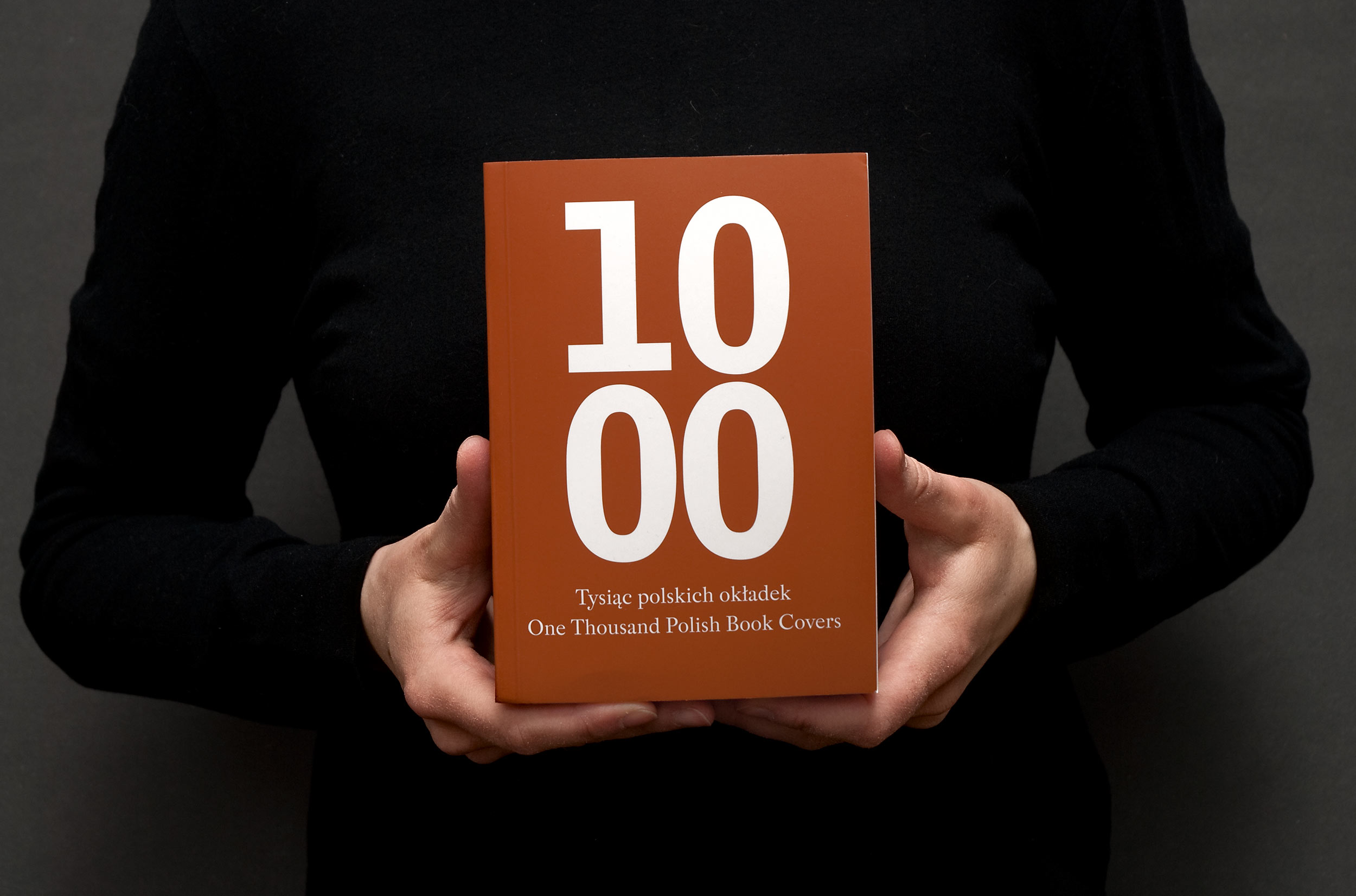

This book was our pet project. It was inspired by a book featuring collection of old Penguin Books’s covers. We thought: yeah… those are nice, but Polish graphic designers were so ahead of this, just nobody knows about it.
We gathered the best book covers we could find in our collection and then asked friends and secondhand book dealers for help with getting even more great designs. It was not supposed to be an objective and well thought selection. Just something to kickstart a trend. Unfortunately many people didn’t see it that way. This kind of anthologies were already very popular and even dull genre but not a single TASCHEN or Phaidon album featured exclusively Polish graphic designers. That is why some readers expected a level of competence from this first chronological juxtaposition – the expectation I’m not sure we managed to deliver.
The book sold out in a few months and was generally well received. In subsequent years more publishers saw this type of projects as a viable business and readers eventually got better access to the history of Polish graphic design. The path was set and the goal was reached.
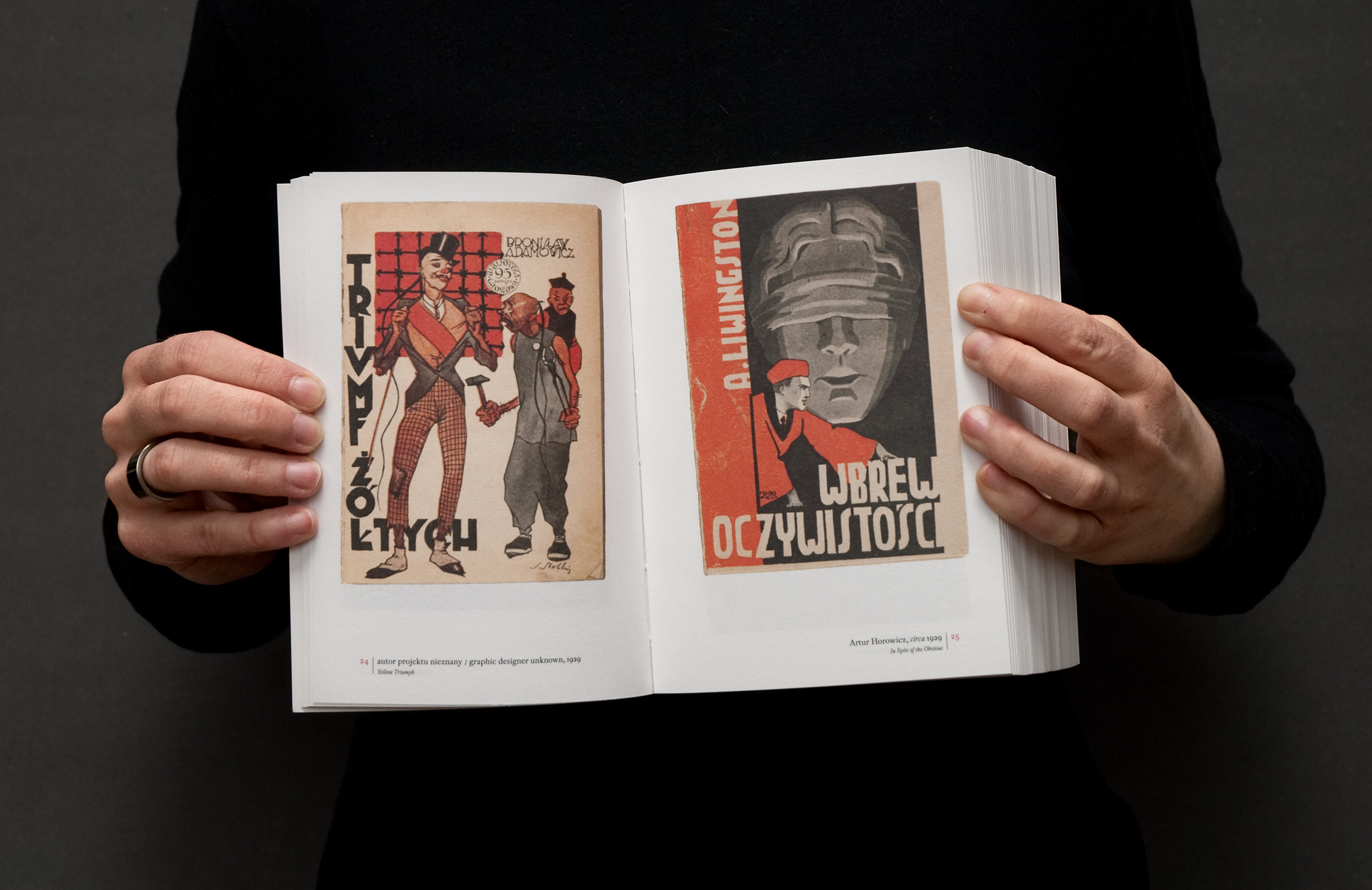
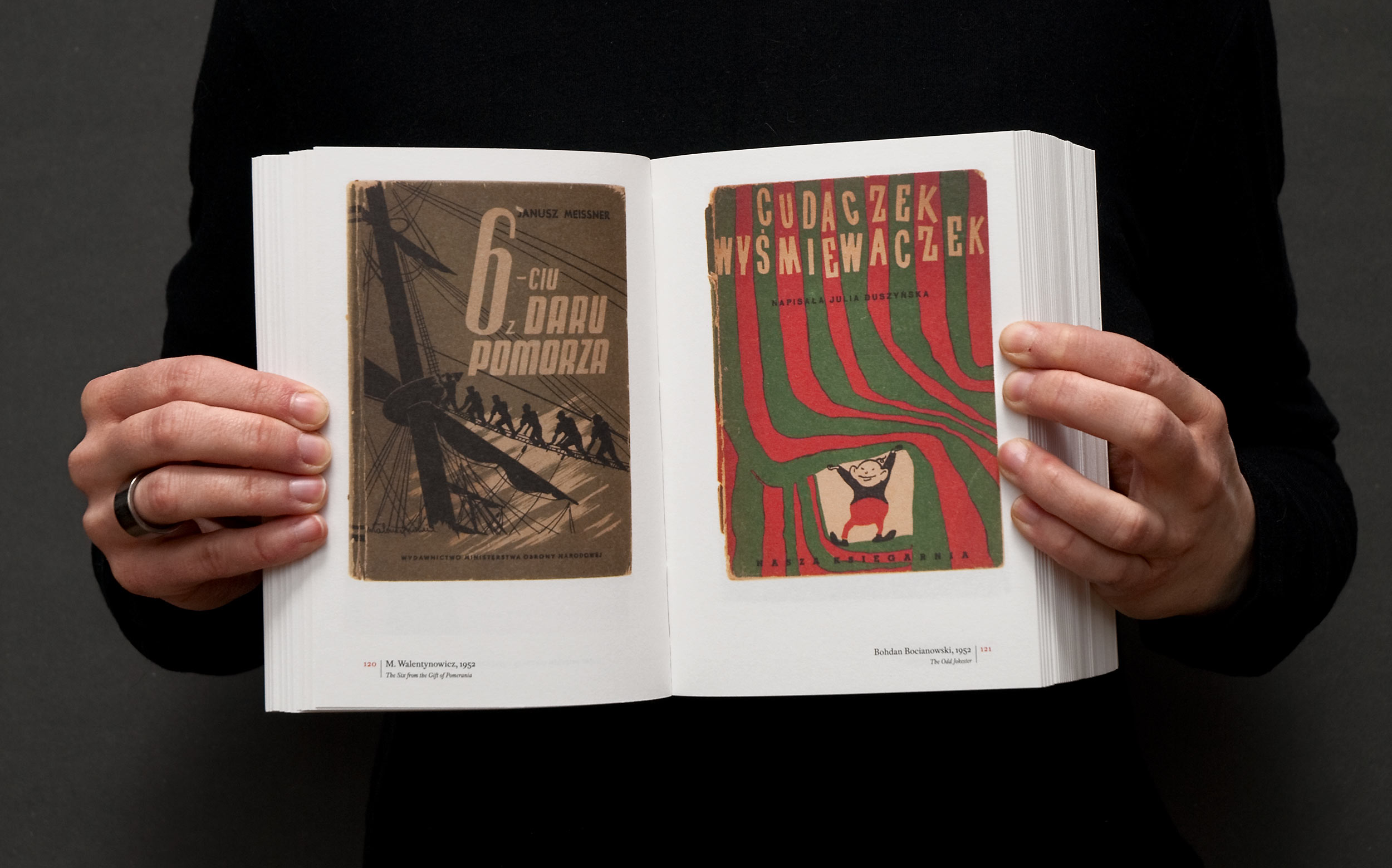
Excerpt from the introduction to the book:
The one thousand book covers found within the covers of this book survey not only Polish literature and history, but also aesthetic trends characteristic of decades past. All this in the brilliant designs of Jan Bokiewicz, Jerzy Jaworowski, Jan Młodżeniec, Janusz Stanny, Henryk Tomaszewski, and many others, often unjustly forgotten today.
Creating an objective presentation of Polish book design of the past century is presumably impossible. Is it because that in this vast amount of time hundreds of thousands of books designed by thousands of artists were published? Rather, it is because that any selection chosen from such a large mass of publications will, in the nature of things, appear fragmentary. Furthermore, Daniel and Aleksandra Mizieliński do not dictate the canon. The one thousand covers they chose were chosen selectively, and such choices are always filled with emotions, memories, and fleeting impulses. This is why the book you are holding does not attempt to include everything. We can compare it to a kaleidoscopic mosaic; one that would look completely different if arranged by other hands. Many of the readers skimming through these pages will surely ask in shock, “But why doesn’t it have this?!” One thousand covers for one thousand years – it may seem like a lot, but it is still not enough for this to be considered a fully comprehensive anthology.
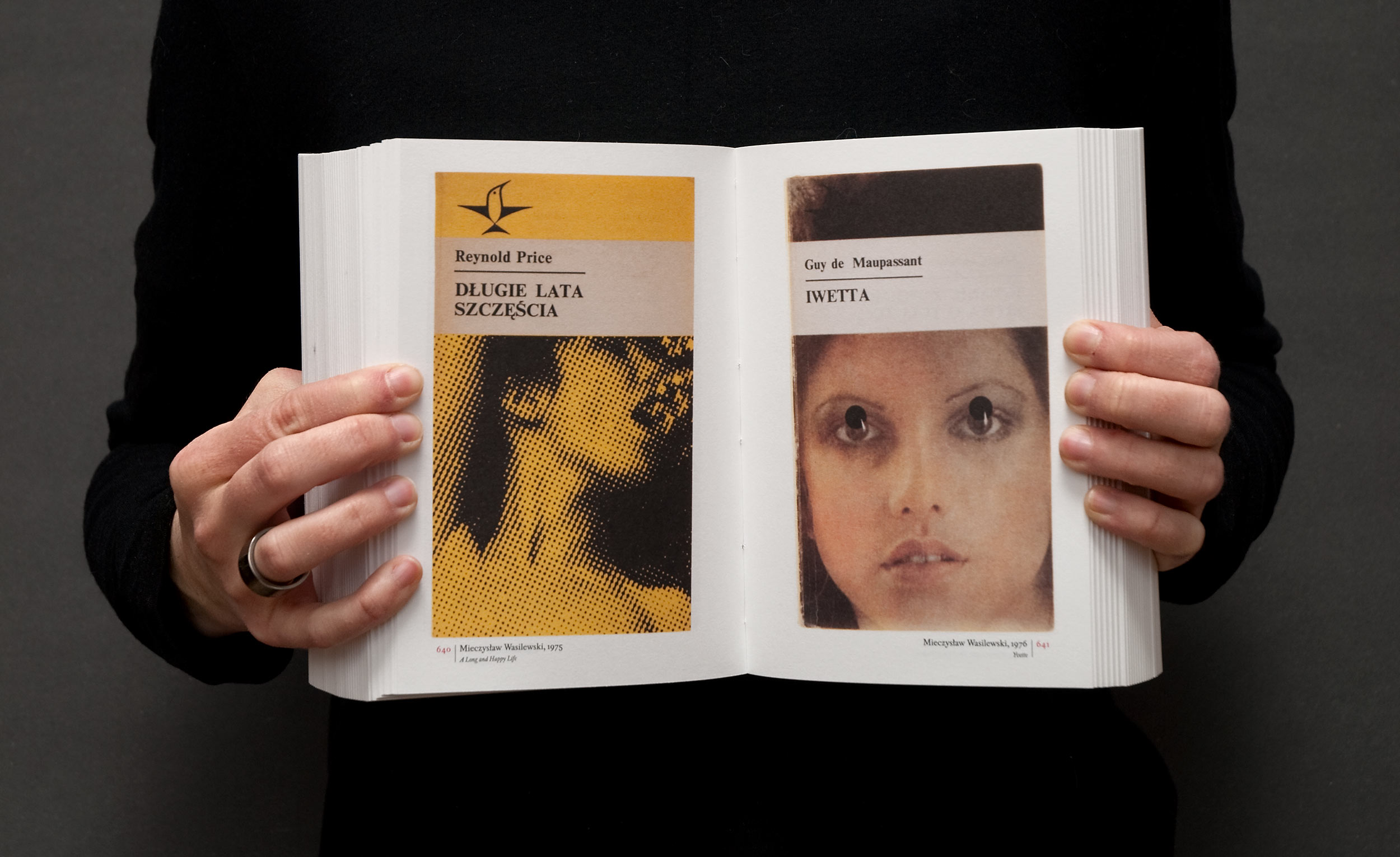
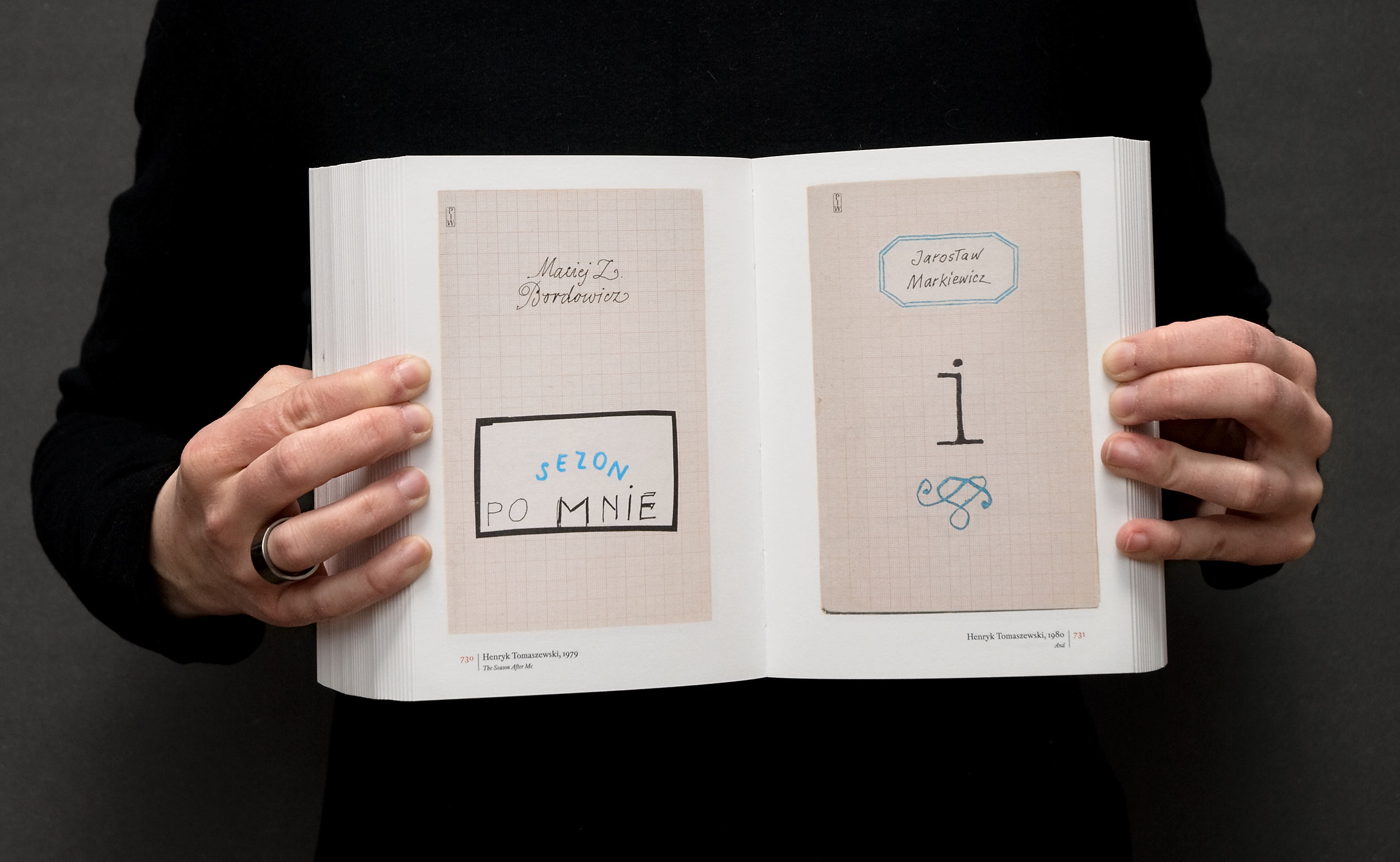
And another excerpt from the introduction:
The Mizielińskis close the cover on this book to anything originating from 1999 or later. The decade between the year 2000 and our current year could be considered an entire era in terms of book design. In this decade, a new generation of book designers came onto the scene. These designers see the book cover as something more important than just a necessary accessory. They see it as a rightful component of a book. This generation on one hand, explores the tradition of Polish graphic art, but on the other, also work in the contemporary world, where knowledge and information travel instantly. Will this closing decade be regarded as one of the most pivotal decades in book design since 1989? To be one hundred percent sure, we need an appropriate distance that still does not exist. In the meantime, however, let us admire the great tradition of Polish book design that was cultivated over the past century. It is a treasure more valuable than gold or precious stones.

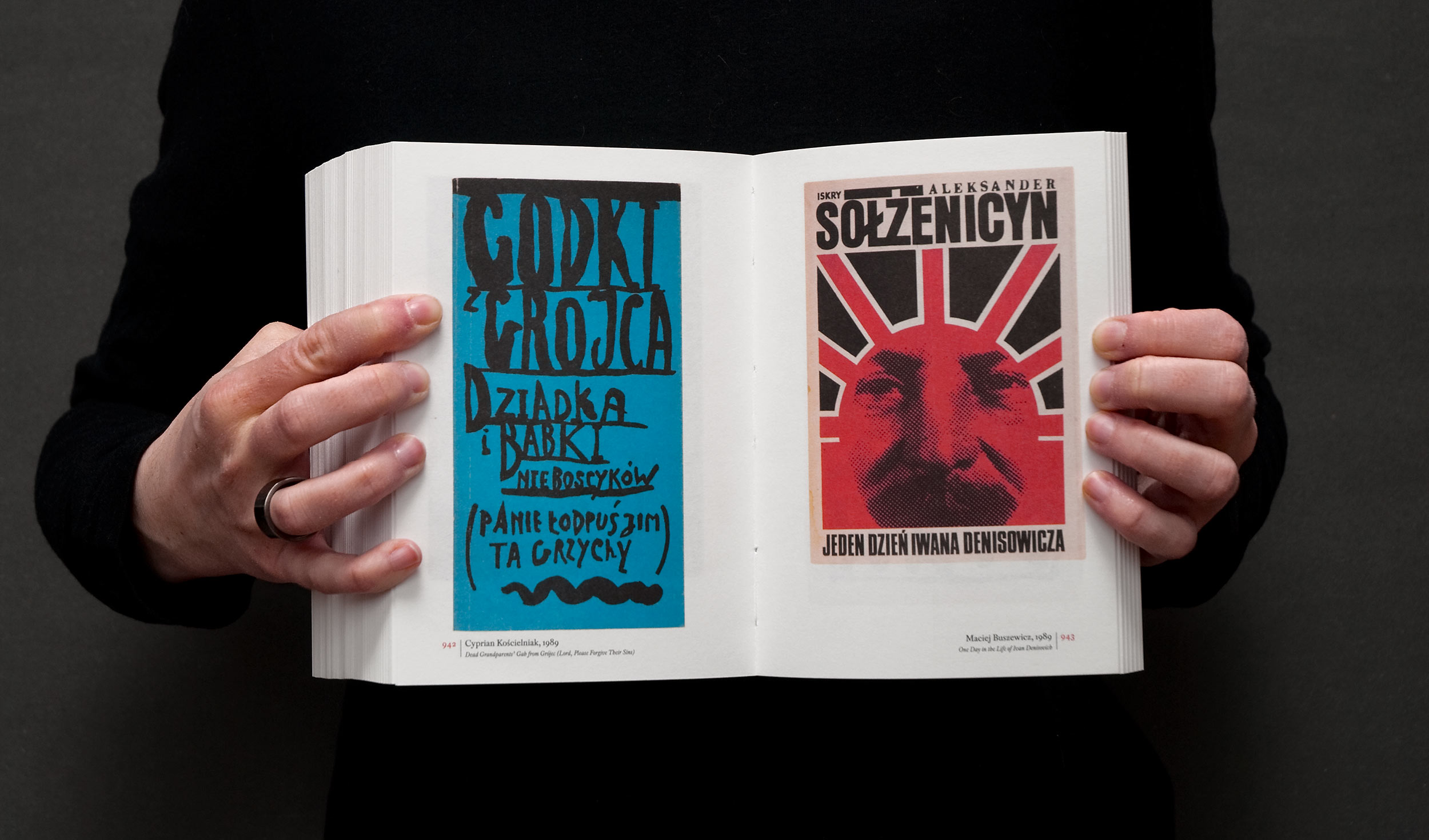
The horror of copyrights
Trying to get permissions for covers designed in the previous century was nothing any of us would want to do ever again. Even tracking who had those rights was in many cases impossible. Do they belong to the publishing house? If the publisher ceased to exist, did the rights went back to the authors? Some publishers didn’t sign a one time, unlimited agreements. And what about authors that past away? How do we track their heirs?
We had obtained some contacts through friends and older professors from Academy of Fine Art. Polish public institutions that were supposed to help in such cases didn’t even want to talk with us. All except one living authors gave us their blessings. Most heirs did not. All of the big institutions that were managing rights of dead authors and were supposed to preserve their heritage didn’t show any inclination to do so.
After few months of trying we managed to contact about 70% of authors or their families. We didn’t even know if we really needed their permission – different publishers and institutions gave us different opinions. But we kept pushing.
After consulting with Polish leading copyright lawyer we decided to print the book without contacting all of the rights holders. The last 10% was at the time unobtainable. The book was an anthology, so according to Polish law. we didn’t need permission but we needed to propose payment according to Polish publishing standards. What consequences would we face in case of a lawsuit?
According to Polish publishing norms authors get 10-15% of half of the price that is printed on the book (the other half is locked for distribution). The price of the book was 79 Polish złoty (PLN) so the sum of royalties for all authors per book in best scenario would be 5.925PLN (79 / 2 × 0,15) – about $1,50. There are 1000 covers in the book, so the royalty per cover per book would be 0.005925PLN. We’ve printed 1500 copies so the total payment for the whole run per cover would be 8.8875PLN (about $2.30). If we use a reproduction of someone’s work without contacting the authors and in bad faith we would need to pay three times the required payment. So about 26,66 PLN ($7) per cover. This was the risk we would take (we were missing permissions for only about 80 covers) and I don’t believe (neither did our lawyer) we were acting in bad faith. We wanted to preserve and promote Polish cover design.
We took the risk and the reaction of the authors, their families, and the Polish design community was really great. We were really pleased with that, but would never do it again.
The horror of shipping
We already have been working on a series about art which was published by Kuba Banasiak, who was the founder of Stowarzyszenie 40000 malarzy (Warning! This is an old website and requires Adobe Flash Player to work properly). We didn’t want to handle distribution so we asked Kuba to be a co-publisher for this title. 40000 malarzy had only one series of books. They all had the same dimensions and idea for a cover. “One thousand book covers” was placed as a ninth book in this series.
We covered the cost of printing of a limited run of 1500 copies and created a small website were you could buy the book. We offered to handle shipping of books sold via website and that was a big mistake. We didn’t know what are we getting into. Our very small apartment changed into a book warehouse and we were spending most of our days on packing and carrying loads of packages to the post office. Each book weighed 1 kilo and there were days were we had to send 50 books.
People working at the post office loved us because at that time Polish Postal Service had to start fighting for its place on the market and wanted to change their image from totally not friendly or even hostile to a more approachable one. They offered bonuses for employees who handled more packages (not letters, just packages). This way the employees were very friendly to customers sending packages and even more friendly to people who brought a few dozens of packages every day.
During these months we learned a few things about international postal services. For example, sending a regular, non-priority packages between continents is like throwing them down the well. Some packages from Poland to US arrived after 4 months. Some didn’t arrive at all and we got them back after 5 or 6 months. We couldn’t even file a complaint because you had only 1 month to file it since it was sent.




